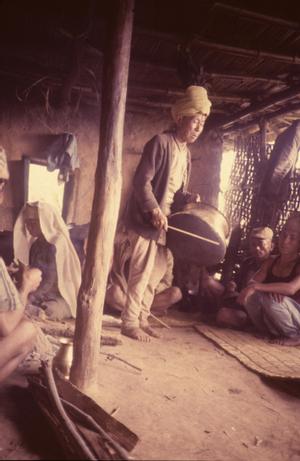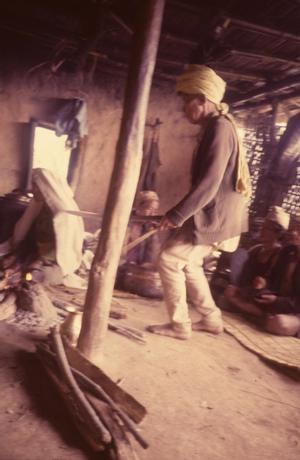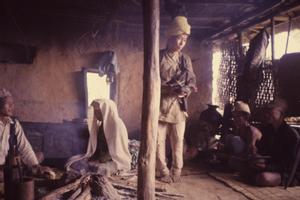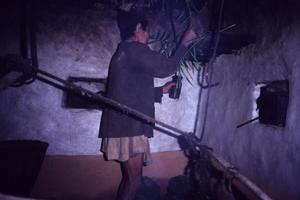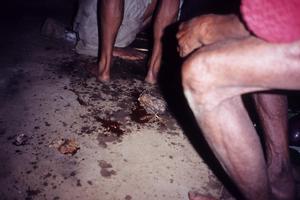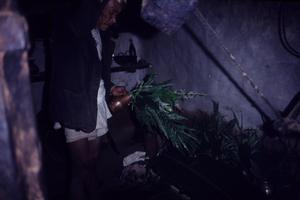Nuwāgi Cycle
The nuwāgi cycle celebrates the first fruits offering and is the most important ritual occasion during the harvest season in autumn, in the month of Kārtik (October/ November). The ancestors are presented with the new rice or millet, and only after they have eaten can the household consume the newly harvested grains. Thus it is a happy occasion: it is a time when the work of the year is about to be completed, the hard days of food scarcity (Nep. anikāl) are over and food is plentiful again. As a good harvest depends on the support of the ancestors, they have to be satisfied and given their share. As honoured guests, they are invited and given the best of foods before everybody else, and they are asked to remain benevolent and supportive. The nuwāgi is a half-day feast marked by a communal meal to which a good number of relatives and neighbours are invited.
The day of the nuwāgi begins in the early morning with the celebration of sacrifices for the ancestral deities, such as Bhārte or Waya nāgi, Lùkwamang, and Sarangdew. Which particular rituals are celebrated depends on the household's clan identity and history of affliction. After these sacrificial rites the house deity is invoked at the newly decorated altar (khamang che:ʔma) by a knowledgeable elder (often the ancestral priest). Subsequent to this the central rite of the nuwāgi festival is performed, the sùkla che:ʔma* (Nep. sùkla bolāune) - 'calling the ancestors'. A big heap of newly cooked grains is offered to the ancestors, along with fruits, vergetables, beer etc.
This is immediately followed by the beer offering to the hearth (situlu tukma). Only after this is finished the prasād, the sanctified offering “returned” by the sùkla, is distributed to everyone and the new harvest can finally be consumed.
For details, see: Gaenszle, Martin. 2002. Ancestral voices: oral ritual texts and their social contexts among the Mewahang Rai in east Nepal. Münster, Hamburg, London: LIT Verlag, pp. 211-225.



